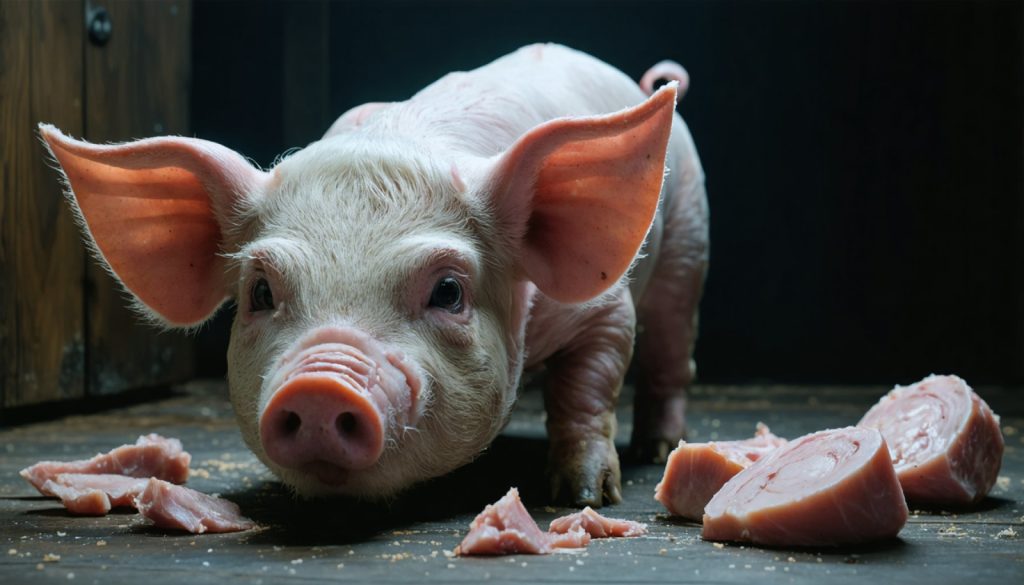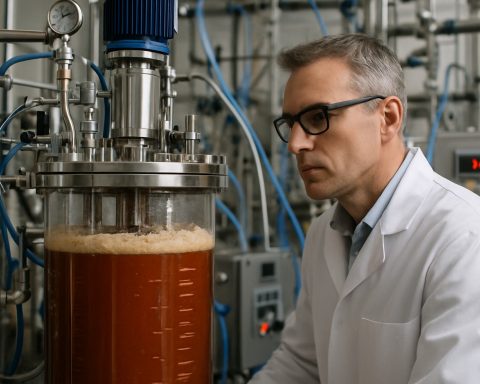- Rare sugars, like D-allulose, offer promise for managing weight and metabolic health.
- Synthesized rare sugar syrup shows potential to increase GLP-1, a hormone that curbs appetite.
- In studies with male mice, rare sugars like D-allulose, D-tagatose, and D-sorbose significantly reduced food intake.
- The sugars, particularly D-allulose and aldohexose D-allose, helped reduce appetite for up to six hours.
- Effects of rare sugars on appetite were temporary, lasting about a day.
- Future research may redefine sweetness’s role in tackling obesity and diabetes.
- The potential shift from animal studies to human application remains a significant leap.
Picture a world where sweet treats don’t come with a side of guilt. Imagine indulging in sweetness that not only satisfies cravings but also helps keep our waistlines in check. A new shimmering hope has emerged from the realm of rare sugars, offering a tantalizing possibility of a sweeter future without metabolic woes.
An intriguing study from Japan, delving into the shadowy corners of sugar science, has hinted at the profound potential of rare sugars. These elusive sugars, which are the unicorns of the carbohydrate world, might hold the key to managing weight and metabolic health. Nestled within the Synthesized rare sugar syrup—an artisan blend crafted through cutting-edge industrial techniques—these sugars whisper promises of a healthier tomorrow.
D-allulose, a standout among the cohort, showed an uncanny ability to unleash glucagon-like peptide-1 (GLP-1), a hormone that keeps appetite in check, in a dance of metabolic mastery. But this isn’t mere sugary speculation; the study’s revelations were vivid and real. A gathering of four ketohexoses, including D-tagatose and D-sorbose alongside D-allulose, sparked a remarkable shift in male mice, driving GLP-1 levels sky-high and coaxing food intake to drop significantly—an almost magical intervention against overeating and its bothersome consequences.
Even more alluring is the fact that the delectable ketohexoses and the unassuming D-allose—a rare aldohexose—proved to be effective in curbing the insatiable hunger beast that lurks within. Mice treated with these sugars saw their cravings diminish to a whisper for about six hours, a temporary reprieve from a continuous cycle of consumption. Interestingly, while D-allose didn’t boost GLP-1 like its ketohexose companions, it still wielded a mysterious power to tamp down food intake, suggesting an alternative yet captivating pathway to satiety.
Yet, as with all things tantalizing, the rare sugars’ effects faded, their power dissipated within a day. The journey to understanding these sweet wonders is still unfolding, leaving us at the brink of discovery. Could these sugars be our allies in the fight against global obesity and diabetes? The study whispers a hopeful “yes,” albeit gently, as if encouraging us to follow the trail blazed by curious mice.
In a world saturated with sugar, the rare and mysterious offer a beacon of potential. As research advances, these precious sugars might redefine the narrative of sweetness, turning it into an ally rather than an adversary. While the leap from mice to humans is vast, this sweet whisper from the edge of scientific exploration invites us to imagine a future where indulgence and health coexist in harmonious sweetness—where the balance of nature and nurture tips in our favor. Let rare sugars lead the way to a new dawn of dietary revolution.
Unlocking the Sweet Potential of Rare Sugars: A New Frontier in Dietary Science
Exploring the Magic of Rare Sugars and Their Potential Impact
The realm of rare sugars offers tantalizing possibilities in addressing global health issues linked to excessive sugar consumption, such as obesity and diabetes. Here, we’ll dive deeper into the world of rare sugars, looking at their real-world use cases, industry trends, and offering actionable recommendations for those looking to incorporate these sugars into their diet.
What Are Rare Sugars?
Rare sugars are monosaccharides that occur in smaller quantities in nature compared to more common sugars like glucose and fructose. Some rare sugars, such as D-allulose, D-tagatose, and D-sorbose, are gaining attention for their potential benefits in metabolic health.
How Rare Sugars Work
1. Glucagon-Like Peptide-1 (GLP-1) Release: Rare sugars like D-allulose trigger the release of GLP-1, a hormone that helps regulate appetite, thereby reducing food intake.
2. Alternative Metabolism: They offer unique pathways in glucose metabolism that may not only curb appetite but also aid in maintaining lower blood sugar levels.
Industry Trends and Market Forecast
The demand for alternative sweeteners is increasing as consumers become more health-conscious. The global rare sugar market is growing rapidly, with projections suggesting significant growth over the next decade due to increased awareness and demand for healthier sugar alternatives.
Real-World Use Cases
– Diabetes Management: Rare sugars have the potential to be incorporated into dietary plans for managing blood glucose levels.
– Weight Loss Programs: Their appetite-suppressing effects can assist in developing weight management strategies.
Pros and Cons Overview
Pros:
– Low-Calorie Alternatives: Provide the sweetness of sugar without high caloric content.
– Metabolic Benefits: Support in glucose regulation and appetite control.
Cons:
– Short-Term Effects: The effects of reducing appetite are temporary.
– Limited Research: Studies primarily revolve around animal models, with human trials still needed.
How-To Incorporate Rare Sugars Into Your Diet
1. Consult a Nutritionist: Before making significant dietary changes, it’s essential to seek professional advice.
2. Experiment with Recipes: Test small quantities of rare sugars in your favorite recipes as substitutes for regular sugar.
3. Monitor Health Benefits: Keep track of any changes in appetite, weight, or glucose levels when using these sugars.
Security & Sustainability
The production of rare sugars through enzymatic synthesis is environmentally sustainable compared to traditional sugar extraction methods. However, more research is needed to verify the long-term sustainability of widespread rare sugar use.
Actionable Recommendations
– Begin substituting a portion of your daily sugar intake with rare sugars to test their benefits in appetite suppression and metabolic health.
– Stay informed on the latest studies and clinical trials concerning rare sugars, especially those transitioning from animal models to human-focused research.
Conclusion
Rare sugars present a promising path toward healthier sweetness without the calorific burden of traditional sugars. As research progresses, they might redefine how sweetness is perceived and consumed. Integrating these sugars wisely into your dietary regimen might not only satisfy your sweet tooth but also contribute positively to your metabolic health.
For more insights on potential diet innovations and health tips, visit Healthline.











